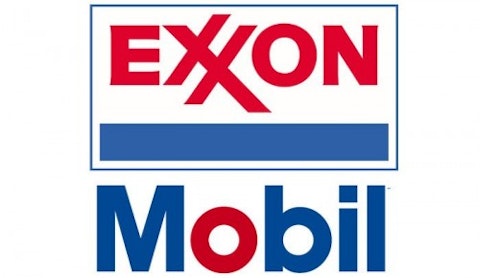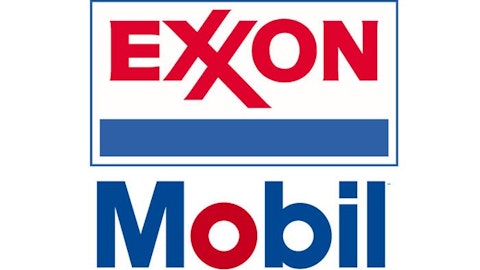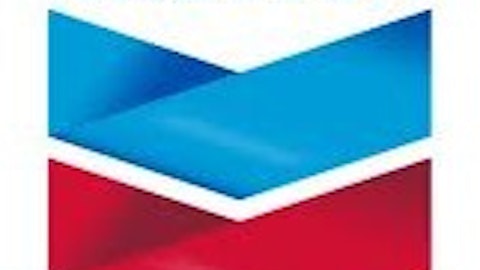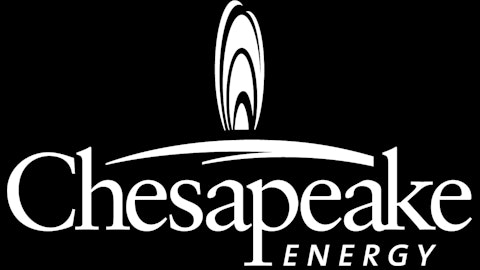When looking for a good “buy and hold” company to add to your portfolio, you may look for a number of focal points. Growing profits? Generous dividends to reinvest? A business model that is stable over the long term? When I ask myself these questions, the first thought that pops into my mind is “big oil.” Think about it–energy is perhaps the single most important commodity in the modern world. We cannot function as a society without energy, and oil is the number one energy source in the world.
Need to fill up to go to work? Gasoline is derived from oil. The roads we drive on? Oil is used to help make asphalt. Buying a bottle of water? Plastics are derived from oil as well. Even the electricity to power your home and charge your Nissan Leaf Electric Car was probably generated with oil powered resources. The point is that oil is still the big cog of our world even with the push for fuel efficient transportation. So what is the best way to include the importance of oil in your portfolio? Let’s take a look at a few major oil companies out there. These companies will continue to grow and give you awesome returns over the long term.
Slow And Steady Wins The Race
Exxon Mobil Corporation (NYSE:XOM) is by market cap the largest company in the world. Exxon Mobil Corporation (NYSE:XOM) is a partial result from the break up of Standard Oil in the early 1900’s. Over the years Exxon Mobil Corporation (NYSE:XOM) has been known as a stable, slow moving, and consistent cash cow that has provided investors with very solid returns from year to year. Its dividends consist of a measly 26% of its earnings, leaving plenty of room to add on to the 31 consecutive years of dividend increases. But with Exxon Mobil Corporation (NYSE:XOM), you not only benefit from a constantly increasing dividend, but you also get aggressive share buybacks to drive earnings per share higher–and Exxon is buying back roughly $5 billion in stock each quarter. When you are the largest company in the world, you don’t have a ton of room for organic revenue growth. The upside in Exxon Mobil Corporation (NYSE:XOM) is that its size gives it great “momentum.” Its established business ventures leaves plenty of cash for dividends and buybacks to boost shareholder returns. Exxon also has the capital to invest in future technologies, making sure that its return on assets is among the best in the business, and it is safe guarded against changes in the oil industry down the road.
What Have You Done For Me Lately
Chevron Corporation (NYSE:CVX) is also a partial result of the Standard Oil break up. Chevron Corporation (NYSE:CVX) is no slouch in the size department, as it checks in at a market cap of $230.5 billion. This smaller size gives Chevron a little more room to grow than a company of Exxon Mobil Corporation (NYSE:XOM)’s size. It has earnings per share of $13.23, and it pays a dividend of $4.00. This will net you a yield of 3.36% at current prices, while only taking up 30% of Chevron Corporation (NYSE:CVX)’s earnings per share. Chevron also is perhaps the most efficient oil company in the industry, as its $24 in profits per barrel is the best in the business at this time. For a clever long term investor, a depressed stock price due to the uncertainty of an external threat can be an opportunity. Partially due to the uncertainty of a $19 billion pending Ecuador lawsuit, Chevron Corporation (NYSE:CVX) trades at only 8.8x earnings. While I don’t aim to speculate, most lawsuits settle long before the final showdown. Even in a worst case scenario, it would be but a blip in the long term performance of Chevron Corporation (NYSE:CVX). Chevron has set its sights on the Gulf of Mexico and the Asia Pacific to drive growth moving forward, as technological breakthroughs have enabled oil and gas to be extracted more efficiently from previously tough to reach areas.
The Extreme Make Over
ConocoPhillips (NYSE:COP) is looking a bit different these days compared to a couple years ago. In May of 2012, it spun off its downstream (oil refining) operations to become the largest pure play exploration and production oil company in the world. In addition to this, ConocoPhillips (NYSE:COP) is also parting ways with assets with low margin and areas of high political volatility. It is using the proceeds of these asset sales to start ventures in areas that will provide higher margin, and less chance of government regulation. This strategy has already paid off in the early going as it announced a significant discovery in the deep water gulf of Mexico this year. Management has recently reiterated that their restructuring plans are on track, and that it is committed to providing top notch shareholder returns. Its dividend is currently 45% of their earnings per share, which isn’t excessive, but provides a juicy 4.45% yield at current prices. This is a nice reward while waiting for the new business ventures that ConocoPhillips (NYSE:COP) undertakes to come online. Management expects these business ventures to boost oil production and margin 3%-5% annually for the next handful of years.
The Foolish Bottom Line
Each of these three companies have a variety of strengths and weaknesses. However, all three can be considered very strong additions to your portfolio due to the strong positions they hold in an industry that is such an important piece of society and is going nowhere any time soon. “Big Oil” can sometimes be overlooked due the tendency of the companies to move slowly price wise. Any investor who buys these three fine companies and tucks them away in a safe place such as a Roth IRA will look very smart 5, 10, or 20 years from now.
The article These Oil Majors Can Net You Major Profits Over the Long Haul originally appeared on Fool.com and is written by Justin Pope.
Justin Pope owns shares of ConocoPhillips. The Motley Fool recommends Chevron. Justin is a member of The Motley Fool Blog Network — entries represent the personal opinion of the blogger and are not formally edited.
Copyright © 1995 – 2013 The Motley Fool, LLC. All rights reserved. The Motley Fool has a disclosure policy.




